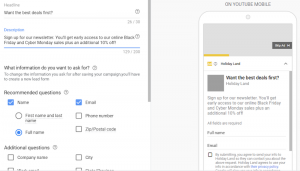Change can be frightening. There’s no denying it. At one time or another, we have all been guilty of sticking with what we know, rather than throwing caution to the wind. It is, after all, far more difficult to take a leap into the unknown than it is to continue doing that which has served us well enough in the past.
Change is, however, inevitable. We must all adapt and move with the times, or we will be left behind. And that goes for businesses as well as individuals. A failure to keep up with the latest consumer habits, or a lack of willingness when it comes to learning new techniques or processes, can quickly turn a steady business into a redundant one.
Creatures of habit
I remember when the iPhone first came out. Initially, I was not impressed. I was used to having a phone with buttons, and I couldn’t comprehend using a device that simply projected them onto a screen. Fast-forward a decade, and I don’t know where I’d be without my iPhone. As well as using it for calls and messages, it’s also my first port of call when it comes to music, podcasts, games, or obtaining directions. It’s difficult to imagine life without it.
To some degree, this scenario sums up what happens during any change. We are creatures of habit, and the vast majority of us become automatically cautious when something crops up that could alter how we undertake a task. We question the value of the change, rebel against the idea that there is a need to adopt any new technologies or processes, largely because significant adjustments are intimidating.
However, we have all found ourselves reaching the stage where we adopt something we were originally suspicious of. Either because of outright curiosity, or a desire to keep up with the crowd, we have all ended up embracing something that at first seemed daunting. And then, after a time, this adopted process becomes so embedded in how we operate that it becomes the norm. It’s a process we’ve all been through numerous times, but that doesn’t stop us from putting up barriers when we encounter something novel.
Of course, when it comes to change in business, the entire process needs to be carefully planned out and streamlined. Companies cannot afford for employees to spend significant periods of time worrying about change, nor should they allow members of staff to get to the point where they question the value of what’s happening.
Rather, the organisation is obliged to provide information, data and evidence that will placate any fears, and, if possible, make people excited about the benefits the change will bring about.
What do we mean by change?
Change, when it concerns companies, can be regarded as anything that alters how a business operates. This can be minor or major, positive or negative. Perhaps you’re going to hire 50 new employees; maybe management has made the decision to move office; or it could be that the current CEO has decided to step down from their role. Employees value being kept in the loop, rather than having decisions thrust upon them at the last minute, and that means communicating messages in a fitting and timely way is vital.
Communication
Any communications campaign needs to be underpinned by a clear strategy and plan, and discussing change internally is no different. This means knowing exactly what the change is, why it is occurring, how it will be implemented, what it means for employees, and how you want them to react.
First and foremost, you must ensure that employees are aware of what the change means, and why it is happening. Transparency is key. Presenting information in a way that is clear, and making clear that you encourage questions and feedback, is incredibly important. As well as being creatures of habit, we are also perennially curious, and giving employees an opportunity to interrogate change is crucial. Not only will this show that they are being listened to and that their thoughts are appreciated, but it could bring to light issues or hurdles that had not previously been considered.
The message(s)
Always consider the three Cs when creating your change messaging; make it clear, make it consistent, and make it compelling. There is nothing worse than a change communications email that leaves the reader with more questions than answers, so be very clear about what you want to say, and then figure out how best to say it.
Also think about the channels that will be most appropriate. Would it be better to send a company-wide email, organise a large scale meeting, set up one-to-one meetings, or perhaps push out the information via social media? Maybe you’ll decide that a mix of these is the correct route to take. This will principally depend on your company culture, the number of employees you have, the departments involved, and the scale of the change, so ensure your choices are entirely suitable for your audience.
There is no one way to deliver change communications. There are, however, some elements that tend to be prevalent throughout all campaigns.
- Understand the necessity of the change
- Think about how best to deliver the information
- Give employees an opportunity to respond, and let them know who they can talk to should they have concerns
- Don’t just deliver one message; keep employees updated on progress, and make them feel involved
- Be honest. If plans alter, or if timelines change, let employees know as soon as is viable
Gauging success
Even if you launch your change communications campaign with the best of intentions, and believe you’ve done everything you can to educate and inform employees, there’s really no way of being able to ascertain how successful your messages have been without asking staff directly.
One of the best ways of doing this is by committing to employee engagement surveys both before and after the campaign. The first will focus on how employees want to be communicated with, both in terms of channel(s) and frequency, while subsequent surveys will assess how successfully the change has been delivered, and whether the messaging was useful.
Once the results of these surveys have been gathered, don’t be afraid to let employees know the conclusion. Not only will this reinforce your focus on prioritising transparency, but it will allow employees to know how their peers feel. It may also be worth holding Q&A sessions so interested employees can air questions, queries or worries that can then be addressed.
Digging deeper
This blog offers little more than a brief overview of how to implement a successful change communications campaign. If you’re looking for a more detailed, step-by-step rundown, our updated guide will tell you everything you need to know.
Business & Finance Articles on Business 2 Community(80)
Report Post






